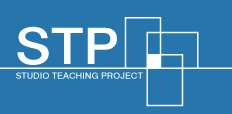
What Indicators can be used to Assess Good Learning Outcomes?
Introduction - a holistic approach
Based on both theoretical and ‘on the ground practice-based’ research, a holistic approach based on the three dimensions of Product, Process, and Person are proposed as being integral to good learning experiences and outcomes in studios, and with different emphasis deemed applicable across discipline areas.
Using a multiplicity of dimensions such as these is crucial and embodies an approach to assessment of learning in studio that is holistic, explicit, fair, balanced, and in line with literature on good assessment practices.
What follows is a brief overview of each of these dimensions with an accompanying set of criteria for each. Further information is also provided in the form of a comprehensive table of definitions as well as relevant case studies.
1. PRODUCT
This focuses on the outcome of the art or design process, where emphasis is primarily on the final product (artefact, event, object or process) and its quality. Quality is used as a proxy to illustrate levels of challenge, acquisition of knowledge, and development of skills.
Criterion for this include:
• content knowledge,
• concept resolution,
• presentation,
• hard skills,
• soft skills and
• ‘magic’
Further Information:
This downloadable table Indicator: Product explains in more detail the definitions and indicator criterion for "Products".
The following case studies may be of interest, and can be found in the "Case Study" area of the Toolkit:
- 'The Use of 3D Computer Gaming Technology in Architectural Design Studio Teaching' - Russell Lowe
- 'Using the Pecha Kucha Method' - Susan Shannon
- 'Capturing, Analysing and Critiquing the Visual Image using Web 2.0 in Studio Classes' - Lynett Zeong
- 'Greenmachines:' - John Vella
- 'Project X' - Carol Longbottom
2. PROCESS
This focuses on the process involved in developing the product or outcome rather than emphasis on the final product or outcome.
Criterion for this includes:
• interaction –disciplinary/interdisciplinary/industry/cross-cultural;
• engagement,
• hard skills,
• soft skills,
• professional practice,
• reflective practice, and
• ‘magic’
Further Information:
This downloadable table Indicators Process explains in more detail the definitions and indicator criterion for “Process”.
The following case studies may be of interest, and can be found in the "Case Studies" area of the Toolkit:
- 'The Use of 3D Computer Gaming Technology in Architectural Design Studio Teaching' - Russell Lowe
- 'Collabor8: Cross-cultural, Trans-national studios' - Ian McArthur,
- 'Experiential Learning via Field Trips' - Martin Walch
- 'Studio Conversation and Formative Assessment' - Michael Dickson
- 'Fully Online Postgraduate Art and Design Program' - Simon McIntyre
- 'Project X' - Carol Longbottom
- 'Porosity Studio"'- Richard Goodwin
- 'Fostering an Interdisciplinary learning environment' - Janet McDonald
- 'Spoken Feedback using Mobile Technology' - Mary Jane Taylor
- 'Video Feedback' - Fional Fell
3. PERSON
This focuses on student development and growth (enhancement) and the human, emotional aspects of learning.
Criterion for this includes:
• self-awareness,
• self-management,
• engagement,
• learning approach/style,
• hard skills,
• soft skills,
• reflective practice,
• ‘magic’
Further Information:
This downloadable table Indicators Person explains in more detail the definitions and indicator criterion for “Person”.
The following case studies may be of interest, and can be found in the "Case Studies" area of the Toolkit:
- 'Engaging Staff and Students' - Darrall Thomson
- 'Modifying the Critique' - Louise Wallis
- 'Collabor8: Cross Cultural, Trans-national studios' - Ian McArthur
- 'Studio Conversations and Formative Assessments' - Michael Dickson



